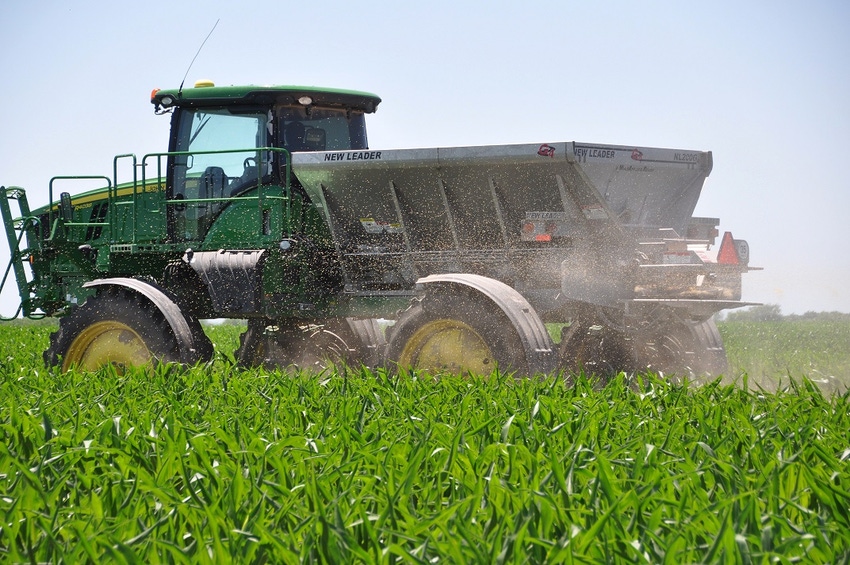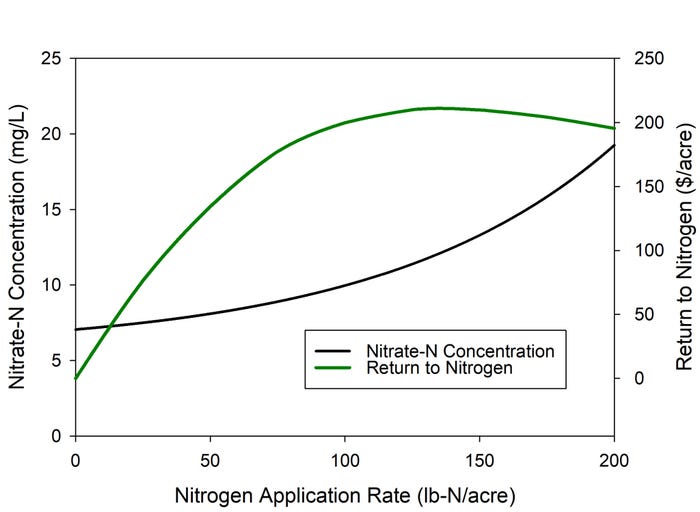February 20, 2019

By Matt Helmers, Iowa State University
While there has been an increased emphasis on edge-of-field practices for nitrate-N reduction, we cannot forget the importance of nitrogen management on reducing nitrate-N loss. No matter the situation we need to try to do the best we can with nitrogen management. Nitrogen management is a win-win management strategy. It has the potential to improve water quality while increasing profitability.
To illustrate an example of this we can use estimated nitrogen application rate from the Iowa Nutrient Reduction Strategy Non-point Source Science Assessment (INRS-NSSA). The estimated state-wide average nitrogen application rate in the INRS-NSSA was 151 lb-N/acre to corn in a corn/soybean rotation with a high application rate of 184 lb-N/acre for the Major Land Resource Area in Northwest Iowa. Using the Corn Nitrogen Rate Calculatoras one estimate for recommended Nitrogen Application rate the Maximum Return to Nitrogen (MRTN) for corn following beans with $4.00/bushel corn and $0.40/lb nitrogen is 140 lb-N/acre with a profitable range from 126-152 lb-N/acre.
Based on the curves in the figure below if we moved from the state-wide average N application rate to the MRTN, the average nitrate-N concentration in water moving through the soil profile would be reduced about 7% and the return to nitrogen would increase by about $1/acre. However, if the application rate for a field was similar to the average in Northwest Iowa of 184 lb-N/acre and we moved to the MRTN, the average nitrate-N concentration would be estimated to be reduced by about 26% with a return to nitrogen increase of about $10/acre. For this situation even if we reduced from 184 lb-N/acre to the upper end of the profitable range of 152 lb-N/acre, we would estimate a 20% nitrate-N reduction with a maximum return to nitrogen increase of about $9/acre.
As you can see, there are opportunities for substantial nitrate-N reductions and improved profitability for producers who are applying nitrogen well above the MRTN. This spring as you establish your nitrogen management protocol keep in mind that you can improve your profitability and also decrease the risk of nitrate-N loss on your fields by simply staying close to the MRTN. More is not always better!

Nitrate-N concentration in water moving through the soil and return to nitrogen as a function of nitrogen application rate.
Source: Iowa Learning Farms, which is solely responsible for the information provided and is wholly owned by the source. Informa Business Media and all its subsidiaries are not responsible for any of the content contained in this information asset.
You May Also Like




